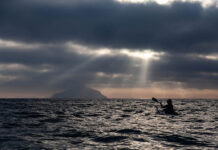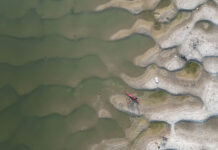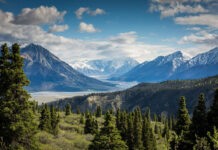Planning to venture far from home on a sea kayak expedition this year? Maybe not, but rest assured there are plenty of paddlers pushing boundaries and promoting great causes in 2023. From the coast of Scotland to Fort Snelling, Minnesota, here are four recently completed, ongoing and upcoming trips to inspire you.
Expedition hub: 4 kayak journeys of epic proportions
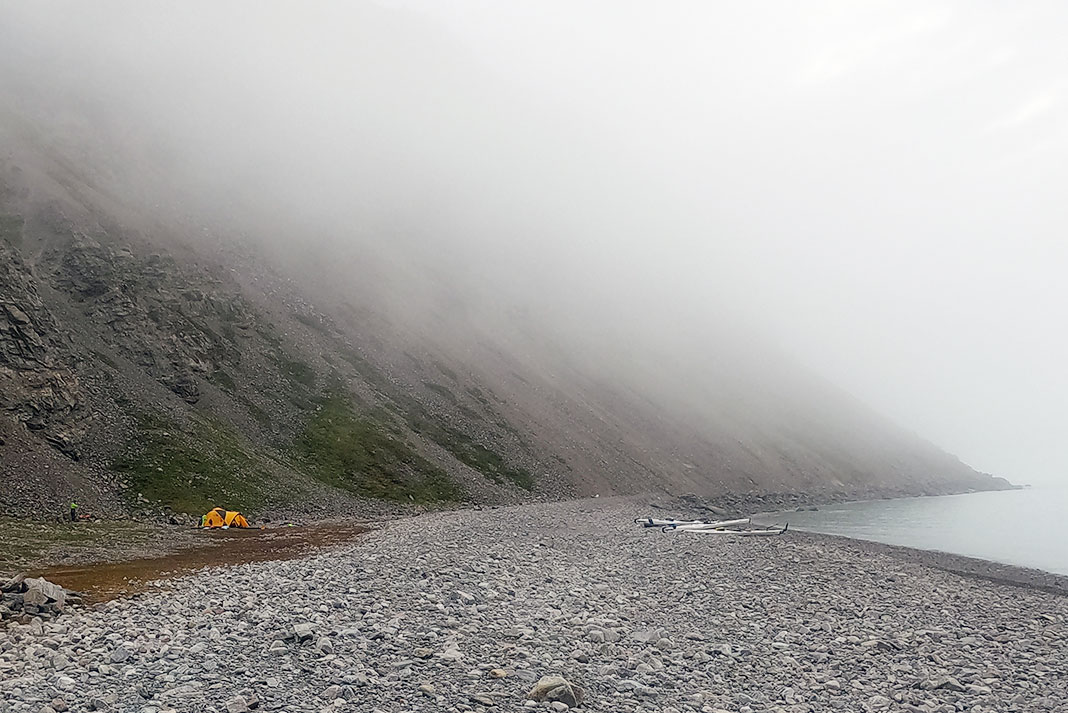
1 Arctic Cowboys saddling up for a second attempt
On August 3 last year, West Hansen, Jeff Wueste and Rebekah Feaster—the Arctic Cowboys—set out from Pond Inlet in an attempt to cross the Northwest Passage by kayak in one season. Two days later, Feaster dropped out of the expedition due to intense nausea. Her teammates carried on, dealing with high winds and waves forcing multiple rest days. Seventeen days into the journey found them far behind schedule, with more bad weather forecasted. They’d made it 400 kilometers into the 3,000-kilometer journey when the rest decided to abort.
“I read every journal and book I could find about the Passage; however, the kayak accounts were pretty scarce,” says Hansen, when asked what he wished he’d known before their Northwest Passage attempt. “It would have been good to know how long the wind storms last, that isobutane fuel wasn’t available at the stores in the Arctic, the delay in obtaining flights and the cost of shipping our gear.”
He says deciding to terminate the expedition wasn’t horrible, but it was disappointing. “By the time we made the call, several factors contributed to multiple delays, from which we were able to learn a great deal,” he continues. “So, it wasn’t as if one big thing happened that caused the postponement, rather a buildup of smaller things.”
For the Arctic Cowboys, safety is far more important than any expedition.
“Many people think explorers are adrenaline junkies; however, the most successful explorers are the most conservative and safest people out there,” says Hansen. “Sure, making a 40-mile open ocean crossing in the Passage is high-consequence, but with patience and careful planning the risk factors can be minimized.”
The Arctic Cowboys will be launching a second attempt at the Passage in early July with a bigger team of six, paddling tandem kayaks. Having more people will add safety, and the additional kayaks will provide more storage for fuel and food, enabling the expedition to manage, without external support, downtime due to wind and weather.
“We’ll approach the Passage like the initial Everest expedition, where the team plans on taking what time is necessary, even if the pace is often slow or nonexistent,” Hansen says. “The wind and waves aren’t going anywhere, and we’ll be ready to take them on, even if it takes an extended period of time.” —by Charlotte Jacklein
Follow along: thearcticcowboys.com
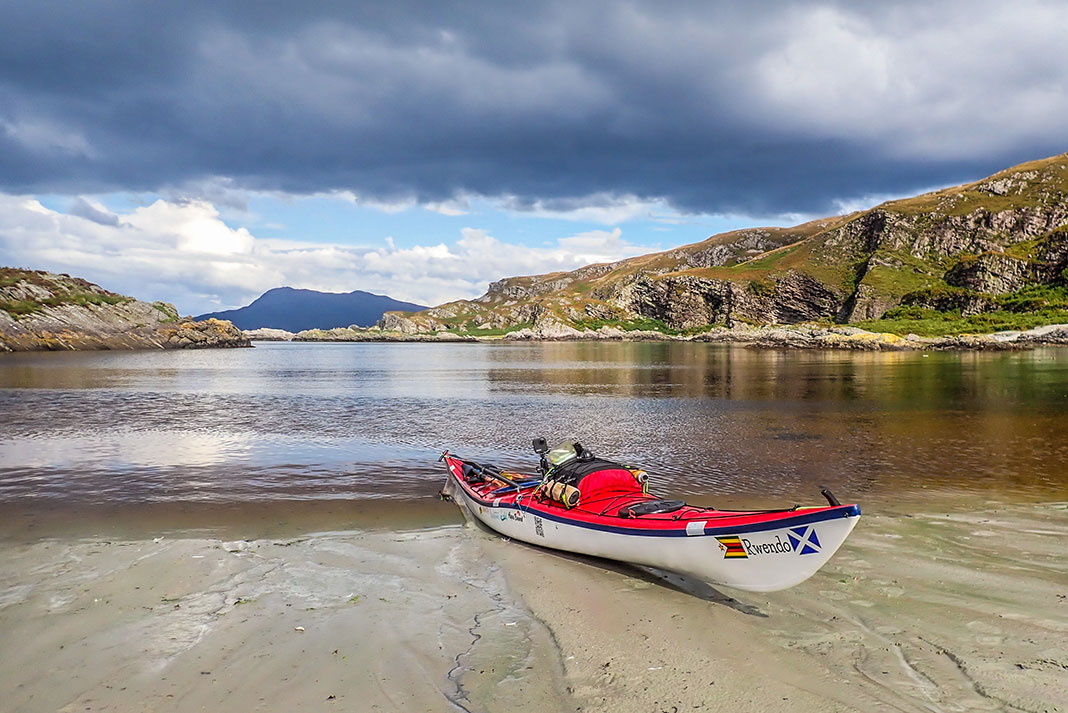
2 Paddling the Scottish coast to celebrate life
Nick Ray was determined not to reach age 60. In 2019, he attempted suicide by leaping from a ferry into the sea. Thankfully he survived the icy Atlantic waters, and now is journeying these same waters along the coast of Scotland for 12 months.
“This adventure is about celebration. Celebrating the fact I am alive. It could easily be so different,” says Ray. “I’m open about my travails with treatment resistant depression and happy to share my experiences, knowing in doing so I offer insight and help to others.”
Ray departed Tobermory, Scotland on August 28, 2022—his 59th birthday. For the following 365 days, Ray is kayaking and camping self-sufficiently along the rugged isles, inlets, caves and cliffs of Scotland. At the time of publication, Ray was camped at Hilton of Cadboll on the Tarbat Ness peninsula and has journeyed more than 3,000 kilometers so far.
In addition to raising awareness about mental health, Ray’s journey has an environmental angle. In his reflections on his journey, Ray observes: “I struggle with great emotional pain with the environmental havoc the human race wreaks on our planet. It’s my hope that through this journey, I discover how I can be human and live in closer harmony with the world I inhabit.” —by Charlotte Jacklein
Follow along: lifeafloat.co.uk
3 Reverse the Bad expedition almost complete
Oslo, Norway-based kayaker Mark Ervin (also known as Mark Fuhrmann) set off on a 10,500-kilometer journey in June 2022 on the Greater Loop, a massive circumnavigation of Eastern North America. Ervin started in Halifax, Nova Scotia and headed counterclockwise on the loop, taking the St. Lawrence River into the Great Lakes, and then navigating onto the Mississippi River and down to the Gulf of Mexico. From there he paddled east along the Intracoastal Waterway before beginning his journey north along the east coast of the U.S. As of June, he had reached Boston and will from there continue north to Canadian waters and his final destination of Halifax.
Ervin’s objective is to share inspirational stories about how people have “reversed the bad” in their lives. Ervin, who turned 65 on his journey, has been posting regular updates on his Facebook page, keeping a video journal on YouTube, and fundraising for Doctors Without Borders and Captains Without Borders along the way. —by Charlotte Jacklein
Follow along: mark-ervin.com
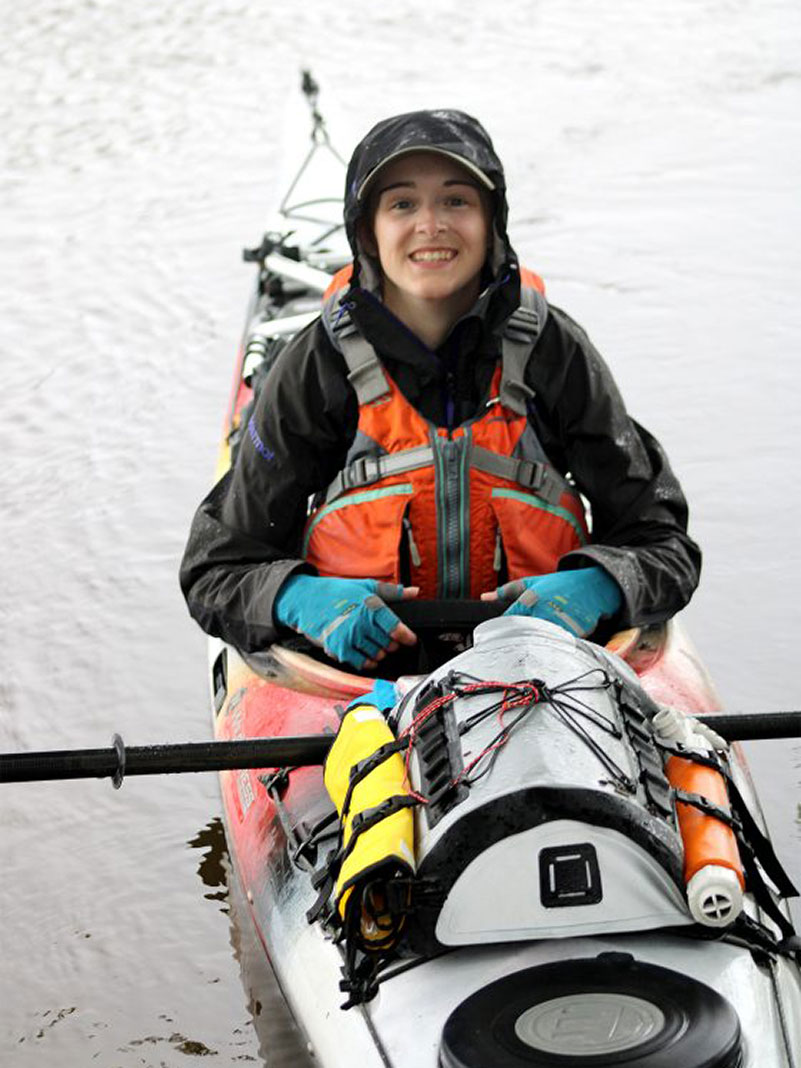
4 Solo from Minnesota to Hudson Bay completed
The 2,400-kilometer journey from Minneapolis to Hudson Bay via the Minnesota and Red rivers has emerged as a sort of rite of passage since it was first documented in Eric Sevareid’s 1935 travelogue, Canoeing with the Cree. Madison Eklund set out on a solo kayak journey along the route, departing Fort Snelling, Minnesota in May 2022 and arriving at York Factory, Manitoba in late September.
Eklund, 26, says her trip was equally inspired by Natalie Warren and Ann Raiho’s 2011 Hudson Bay Bound canoe expedition. Unlike her predecessors, Eklund made the trip in a sea kayak, which made navigating the Hayes River’s 45 rapids more challenging. She didn’t hesitate to make the 4.5-month expedition solo—the first to do so—though she admitted after the trip that the people she met along the way were the highlight.
“I did genuinely look for a partner for this trip, but ultimately could not find one,” she says. “I’m very comfortable on my own in the backcountry, so it’s not that big of a deal for me.”
As part of the trip, Eklund also participated in a citizen science project supported by the North Dakota Department of Environmental Quality’s Watershed Management Program. The project had Eklund collecting water quality samples from the Bois de Sioux and Red rivers in Eastern North Dakota, which were analyzed for Per- and Polyfluoroalkyl Substances (PFAS).
PFAS are man-made chemicals that are used widespread in consumer products because of their ability to repel oil and water and because they are temperature and friction resistant.
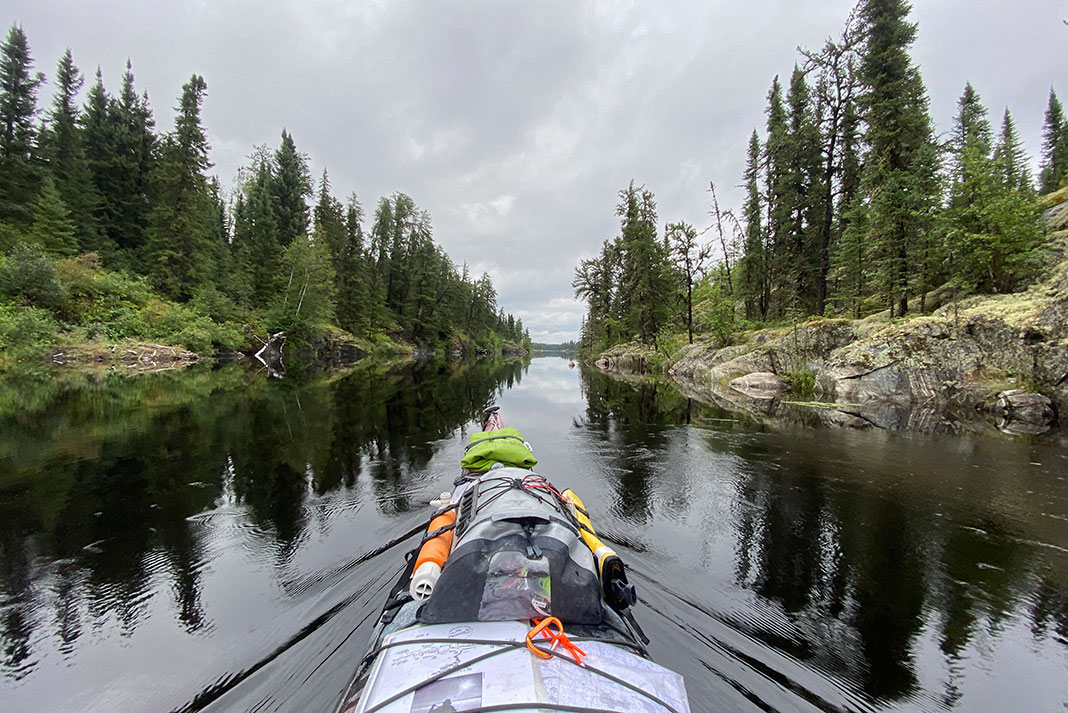
“What makes PFAS so scary is the new knowledge of their harm to human/animal health and their vast prevalence in almost every facet of life,” explains Eklund. “These chemicals bioaccumulate, meaning they never break down, and are now showing up in our food chain and human biological samples.”
According to a report by the North Dakota Environmental Quality team, “Sample results showed measurable levels of four of the 36 PFAS compounds that were included in the analysis.”
Although it was a tedious process to take these samples, including taking blanks and duplicates twice each, Eklund was glad to have been able to support this project while on her journey to Hudson Bay. —by Conor Mihell
Follow along: expeditionalpine.com | @expedition_alpine
For 365 days, Nick Ray is kayaking and camping self-sufficiently along the rugged isles, inlets, caves and cliffs of Scotland. | Feature photo: Nick Ray



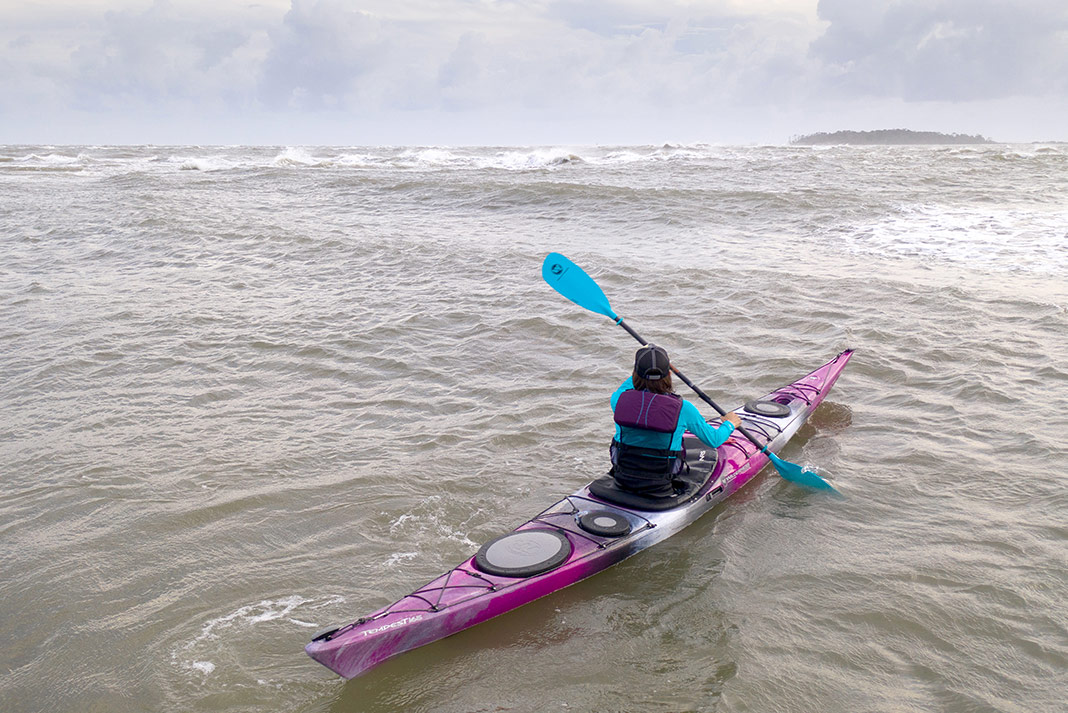

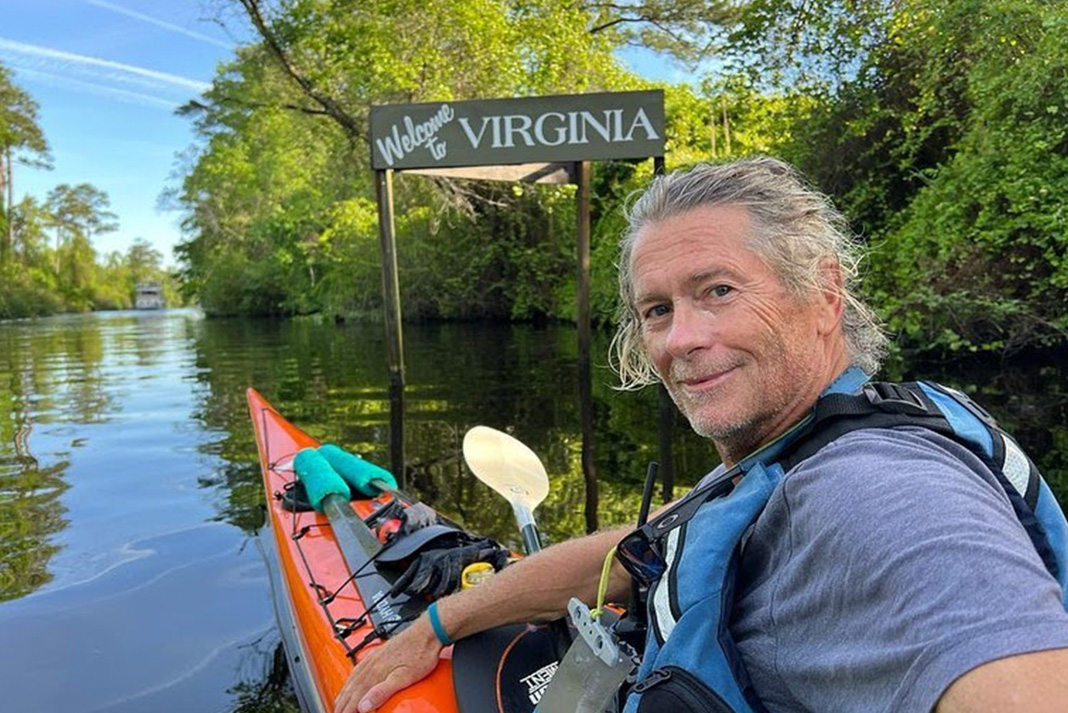

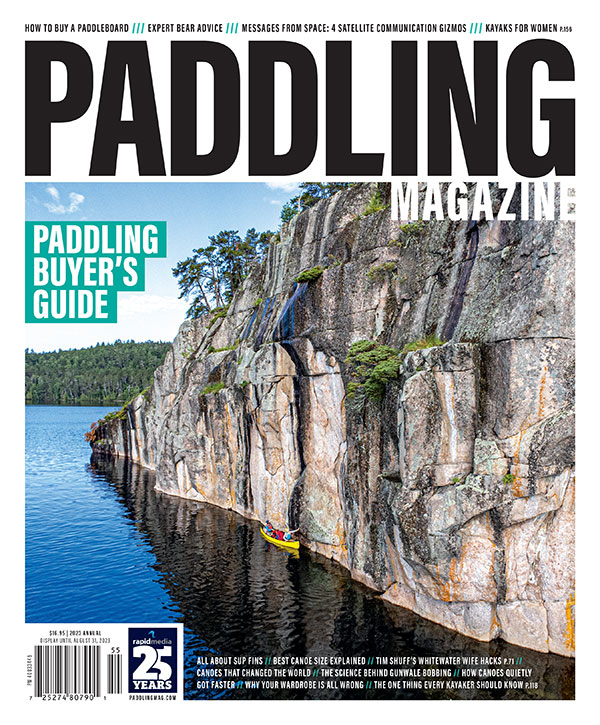 This article was first published in the 2023 Paddling Buyer’s Guide.
This article was first published in the 2023 Paddling Buyer’s Guide. 